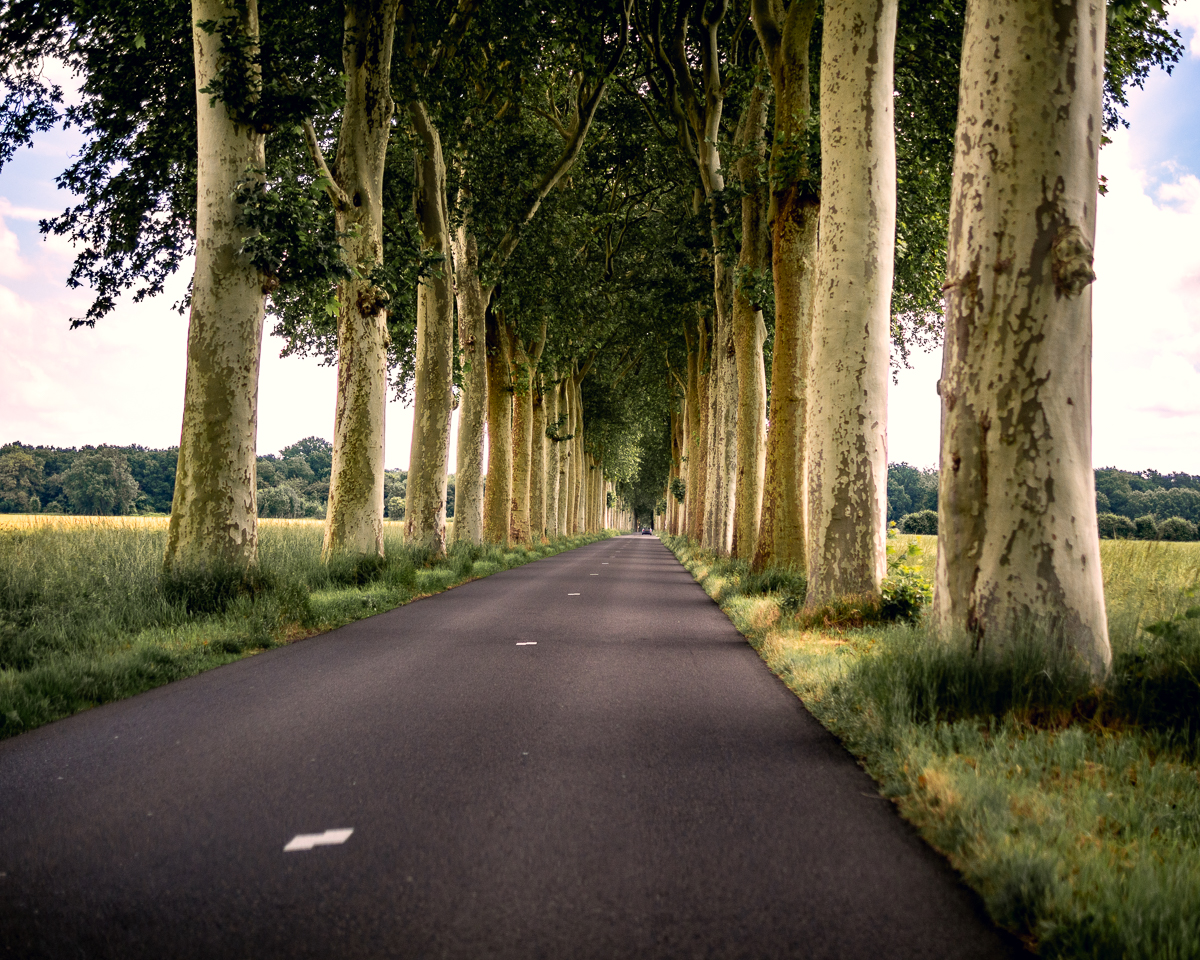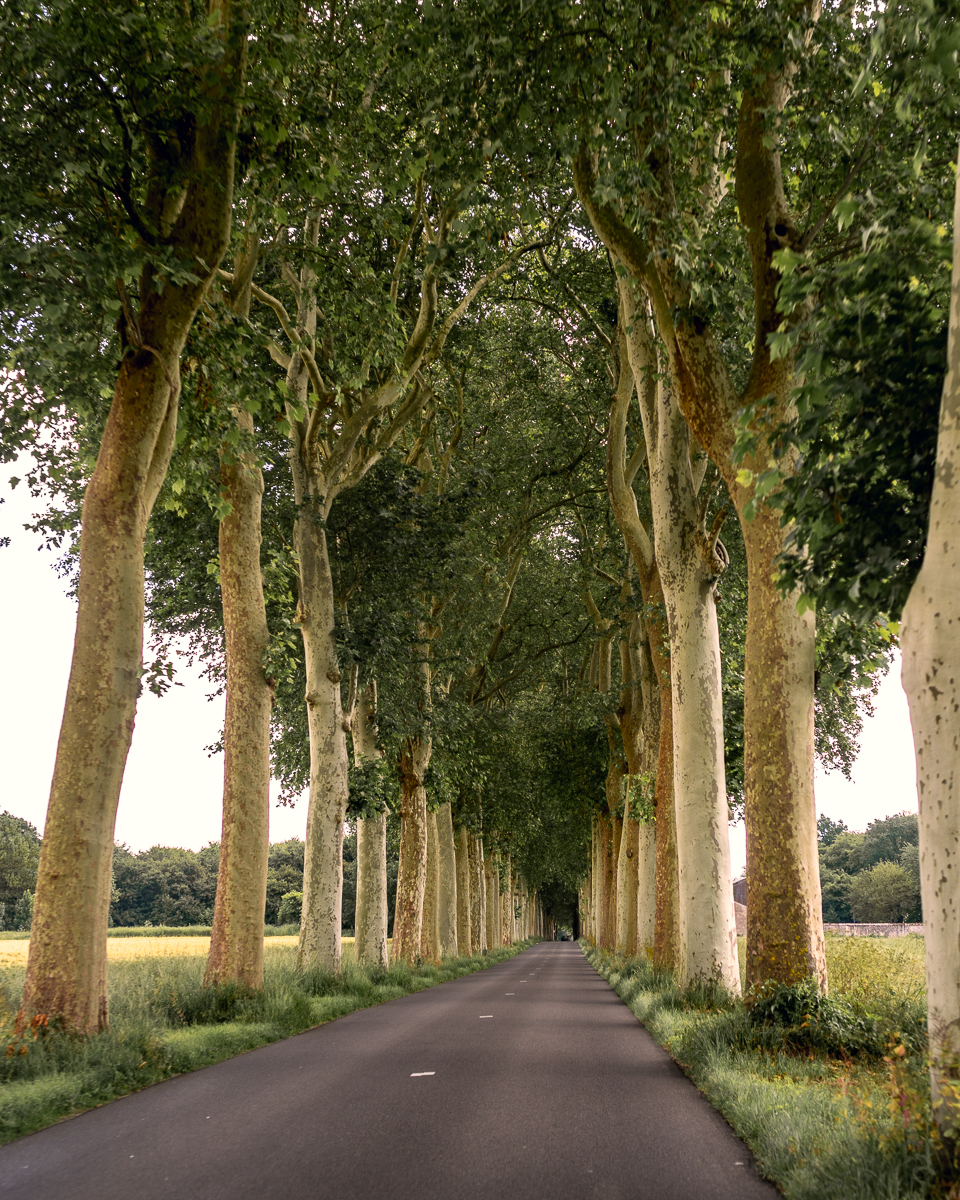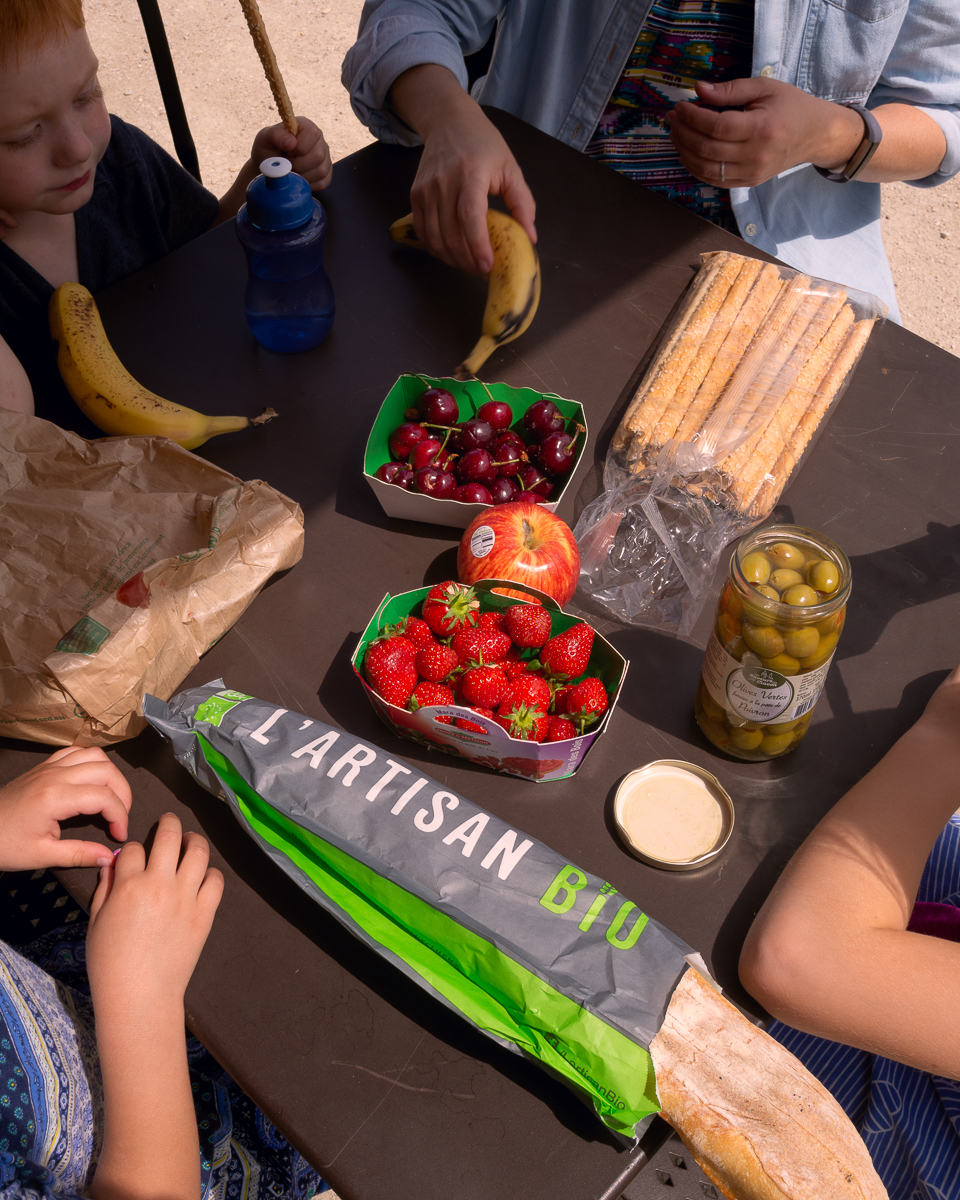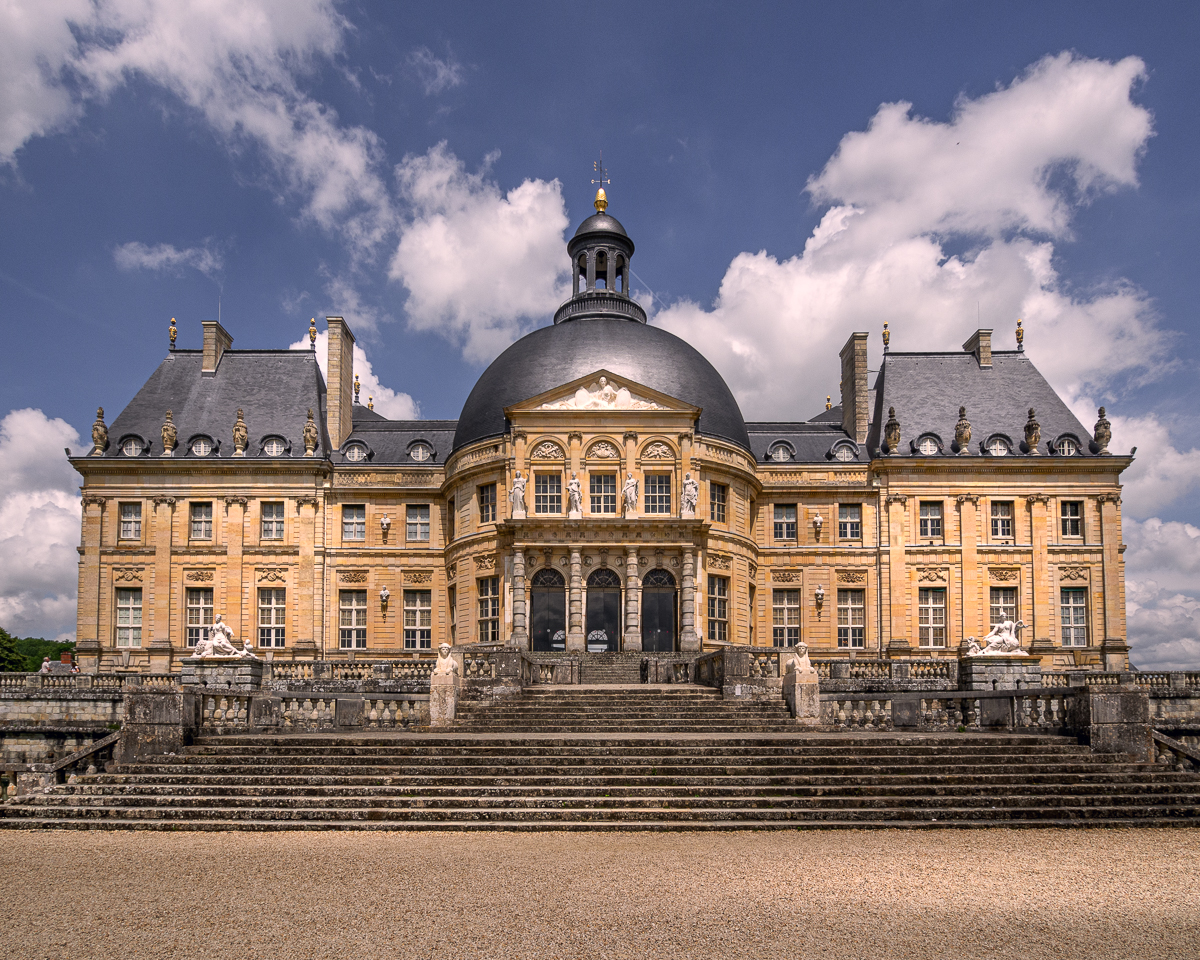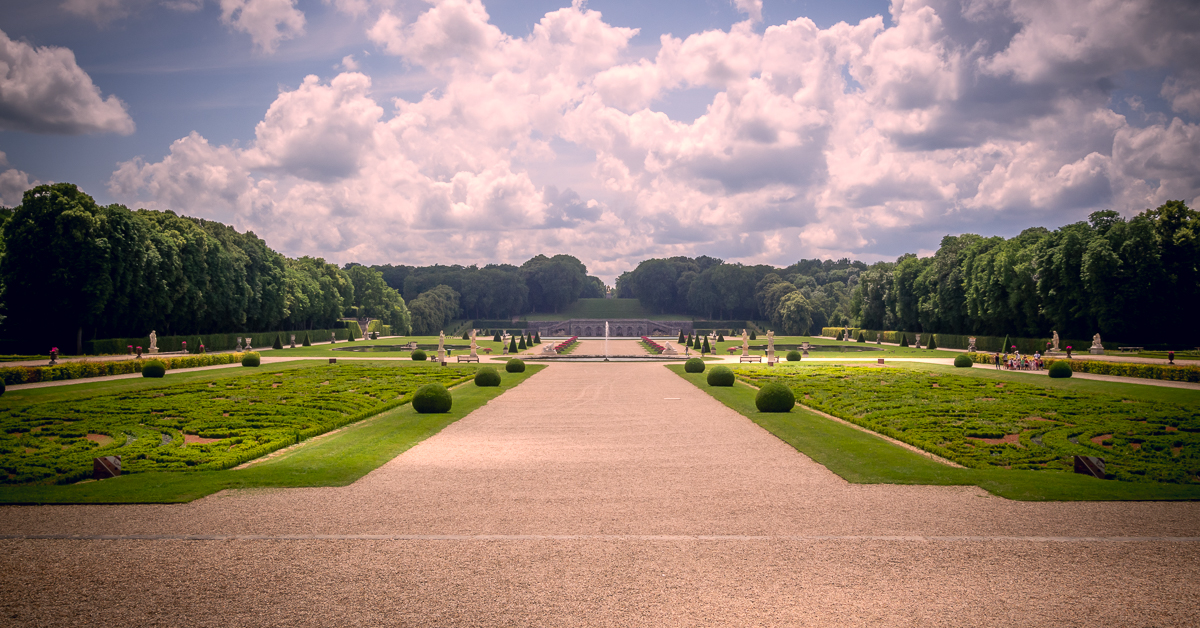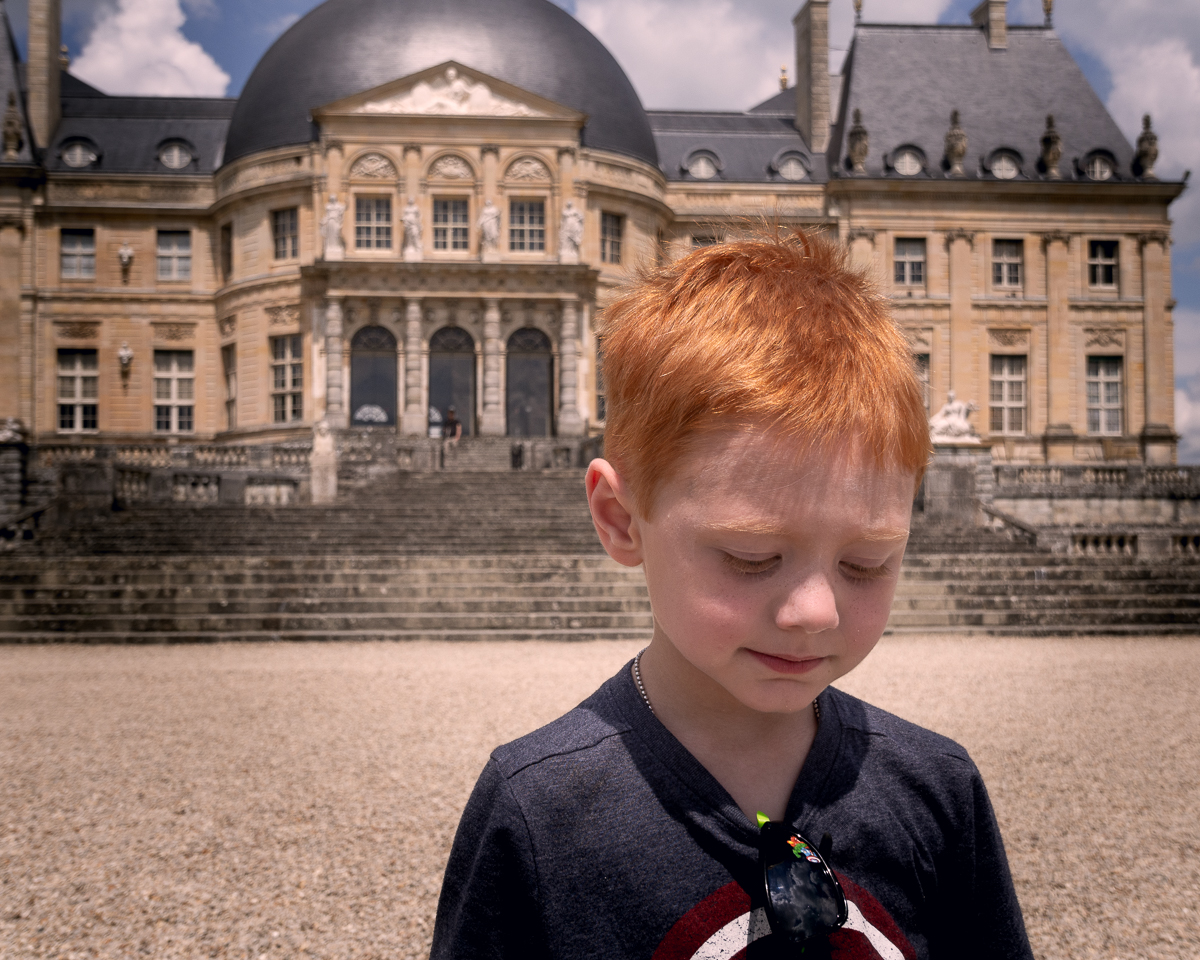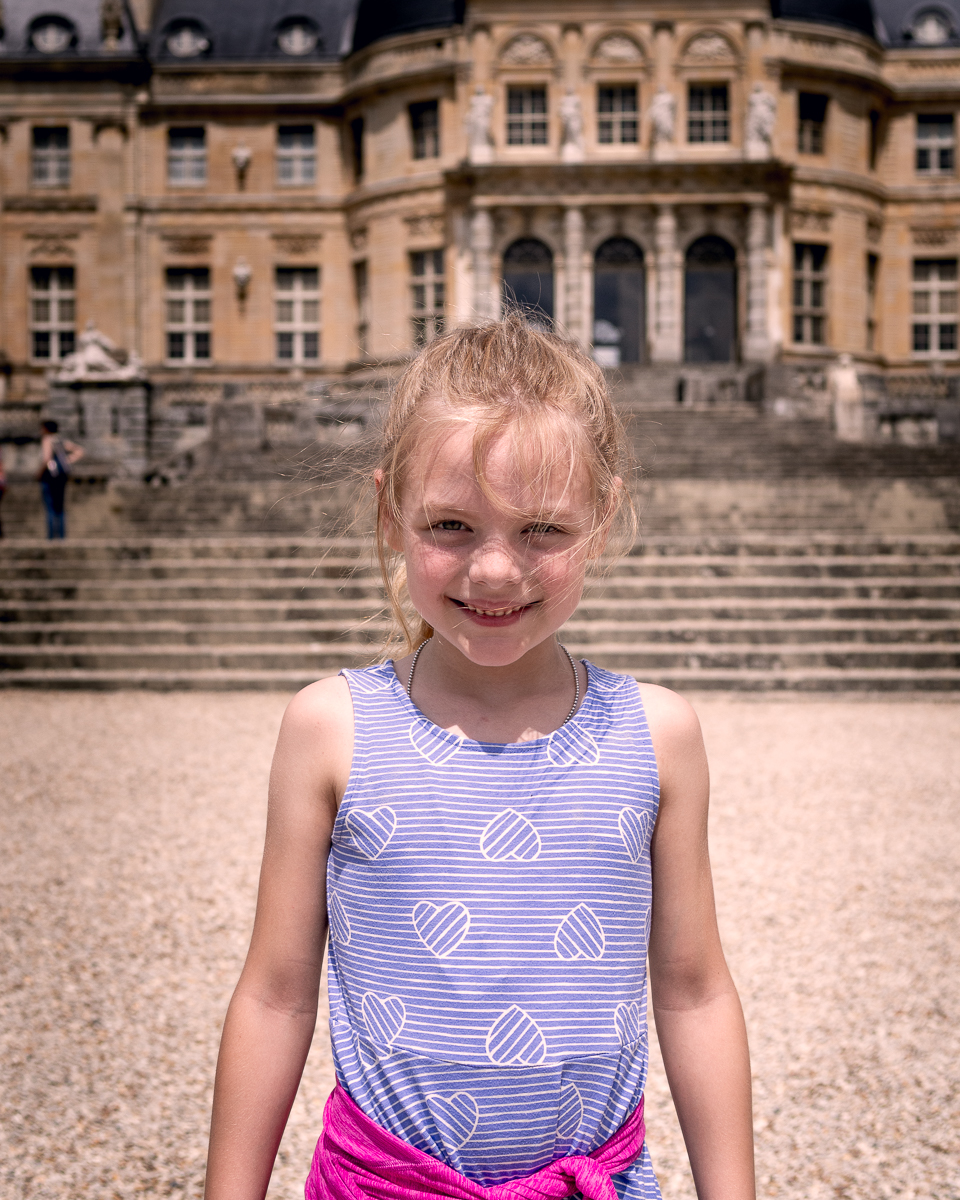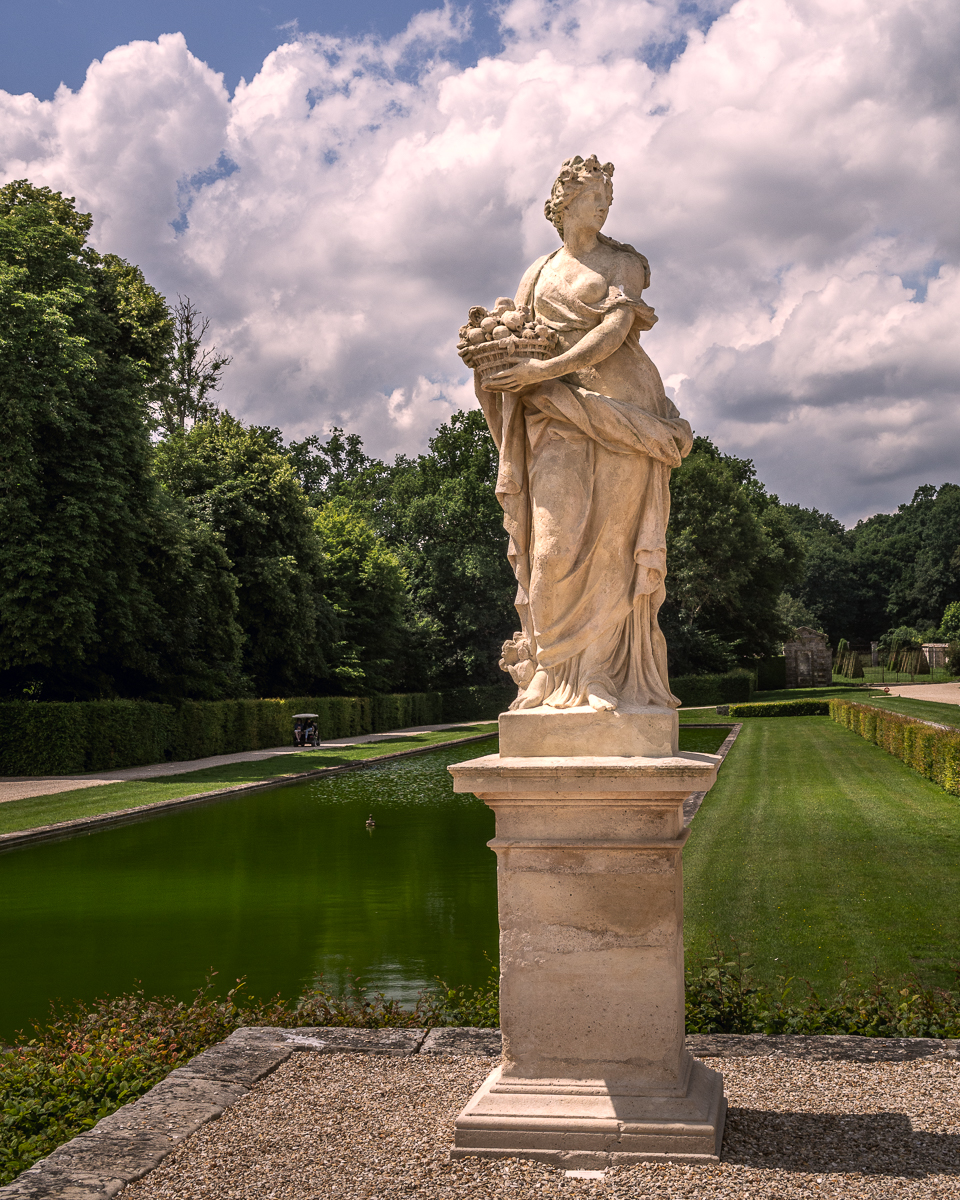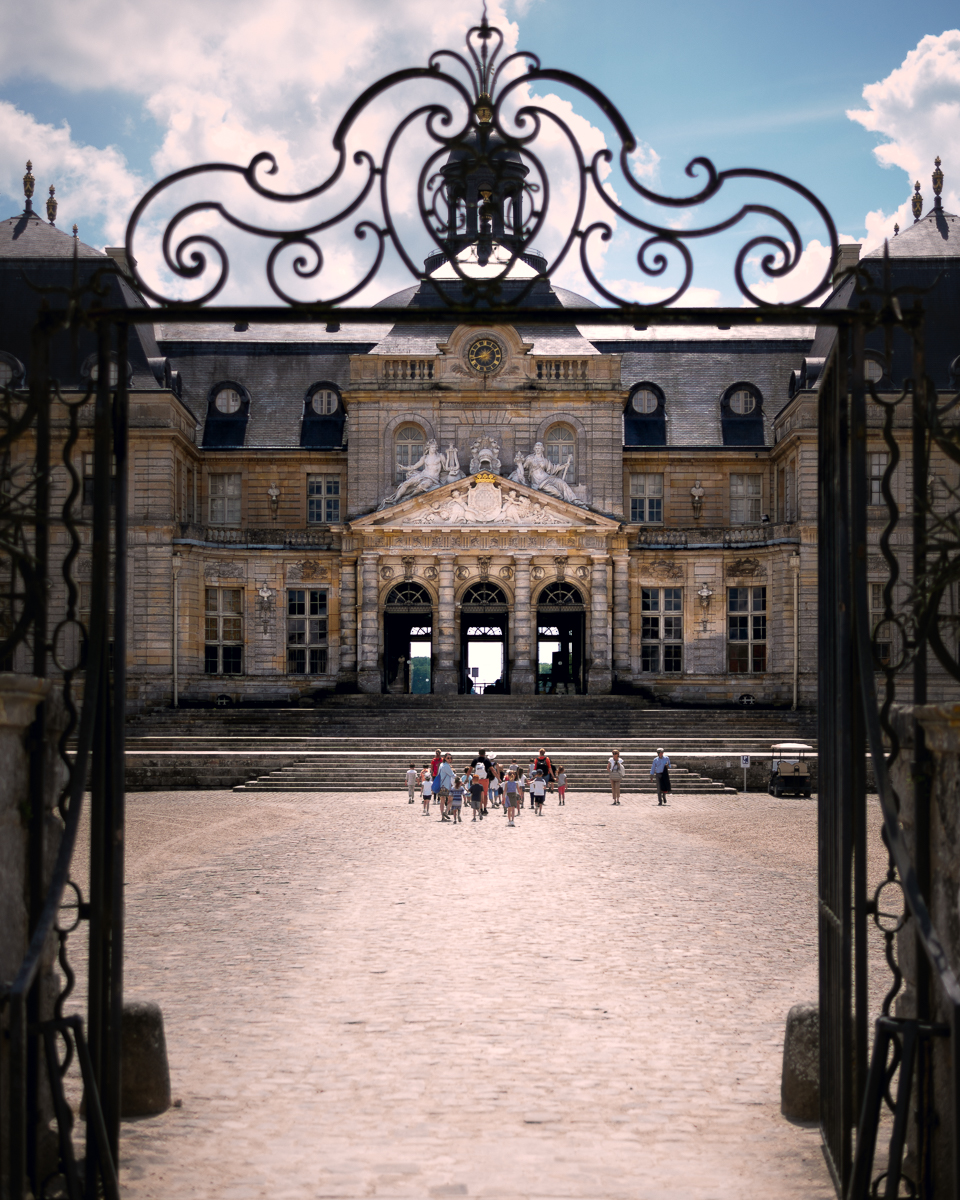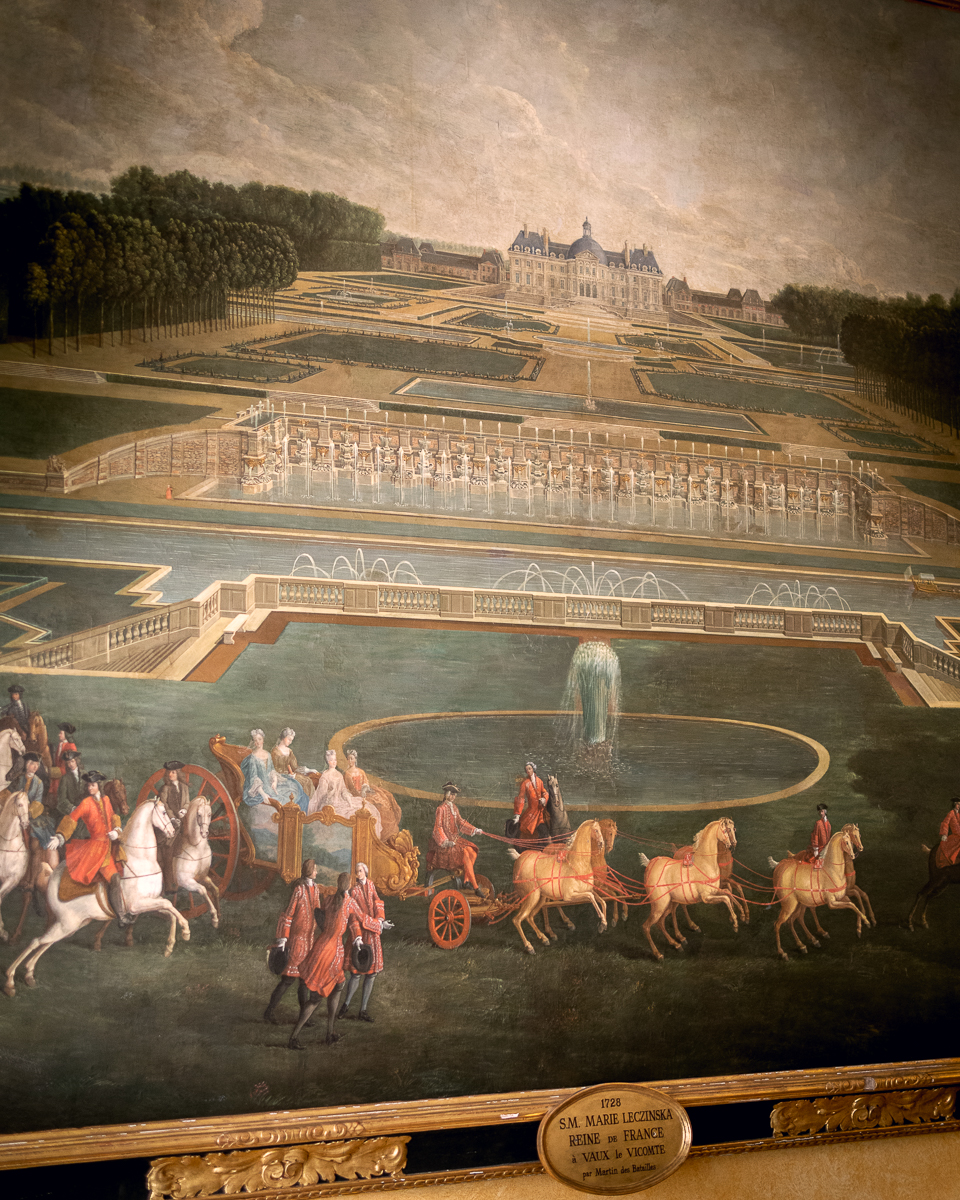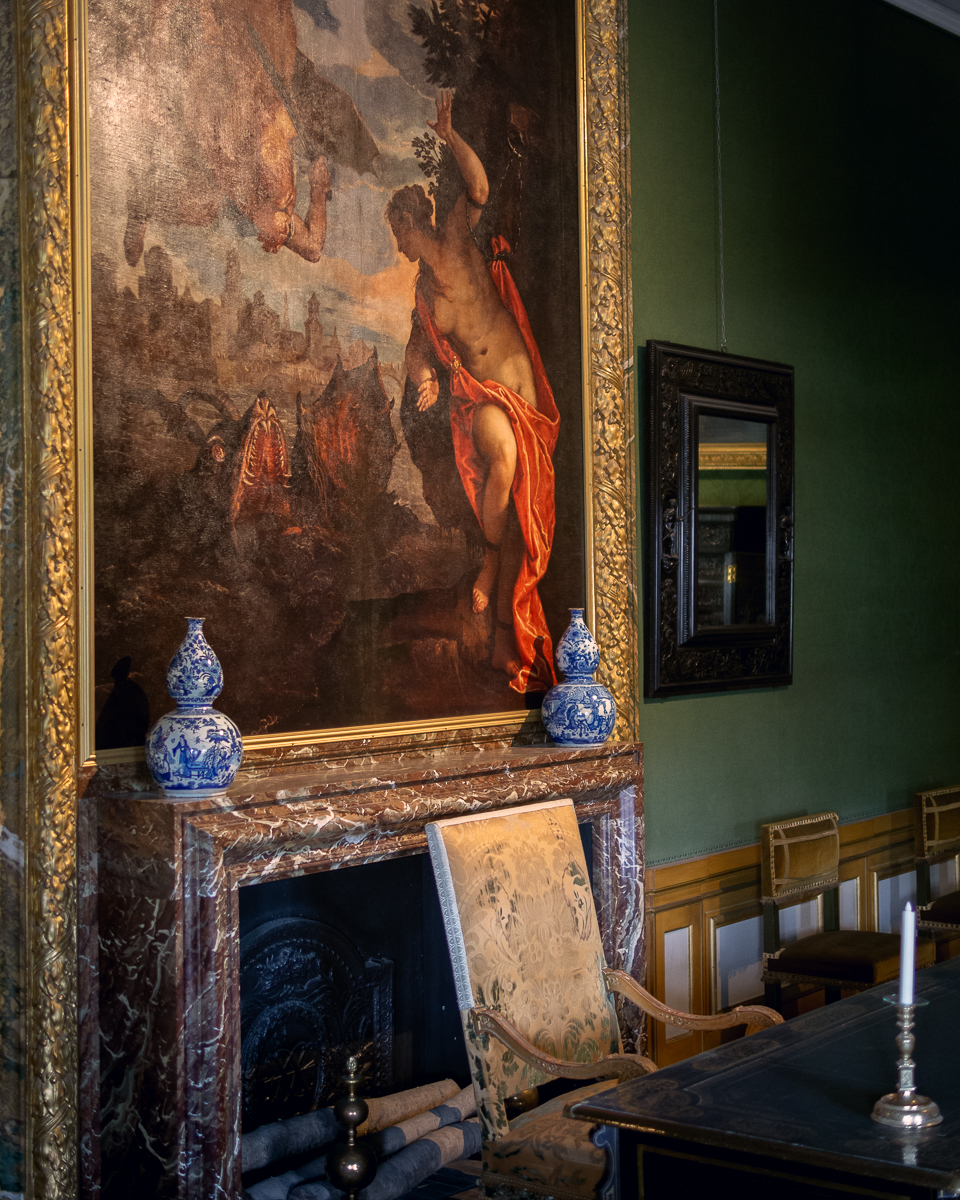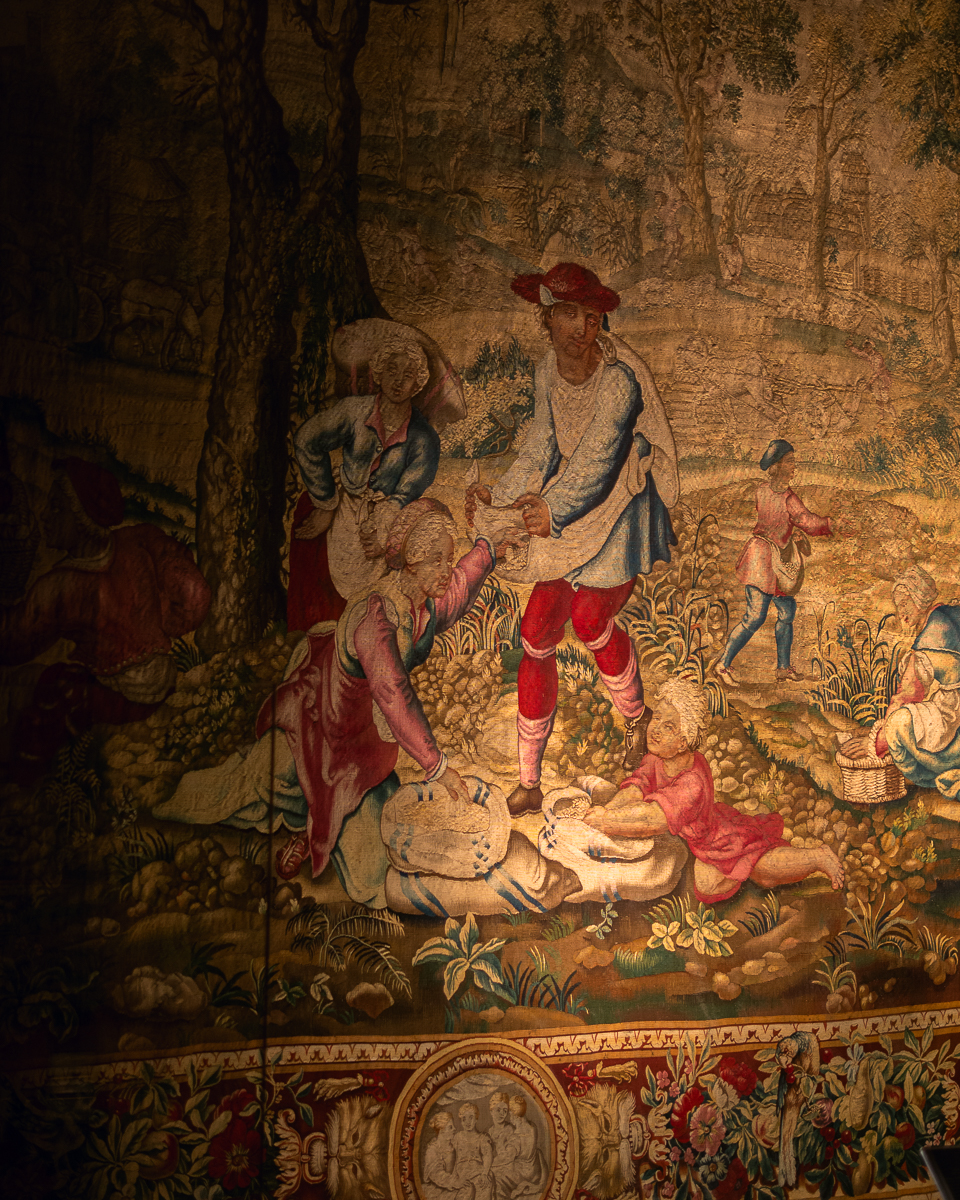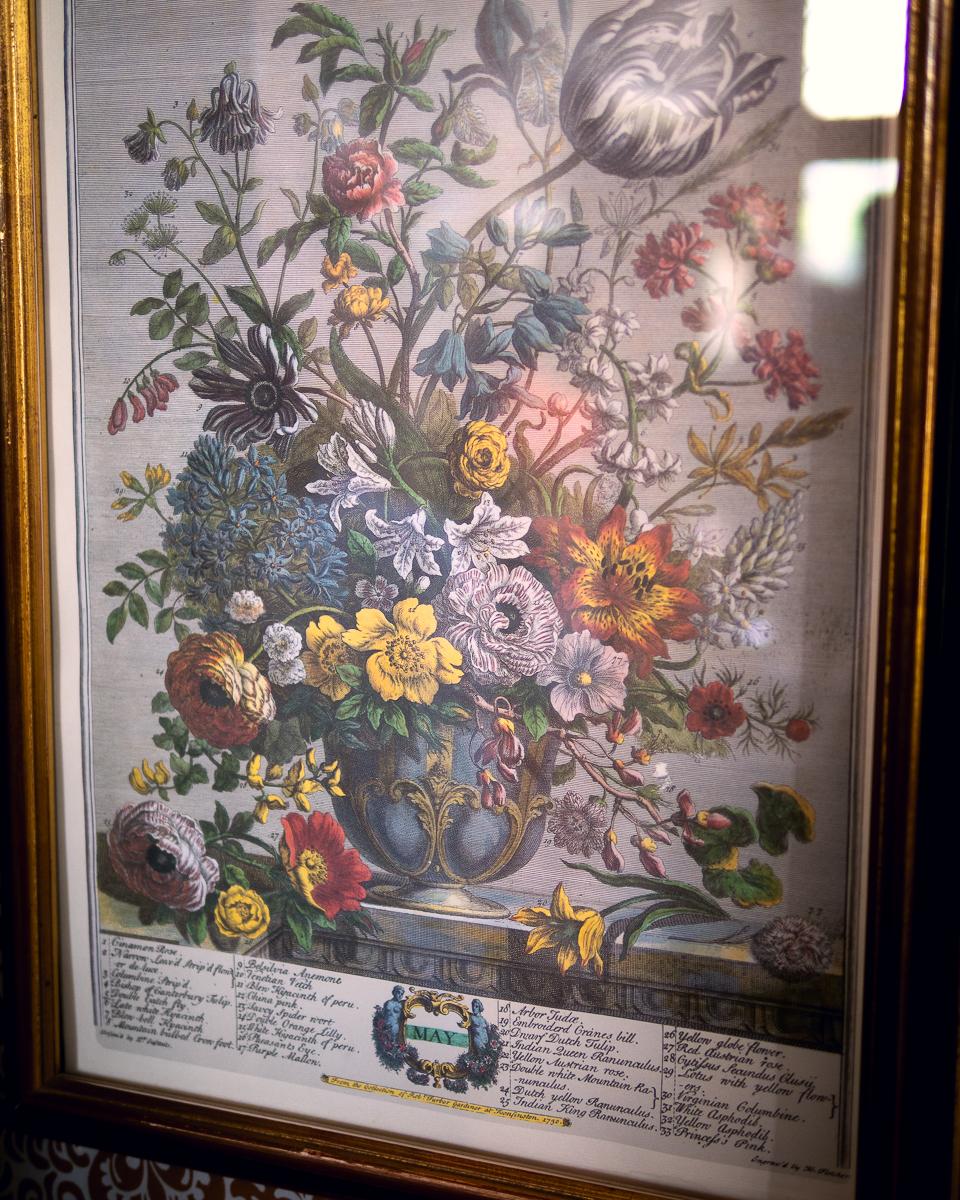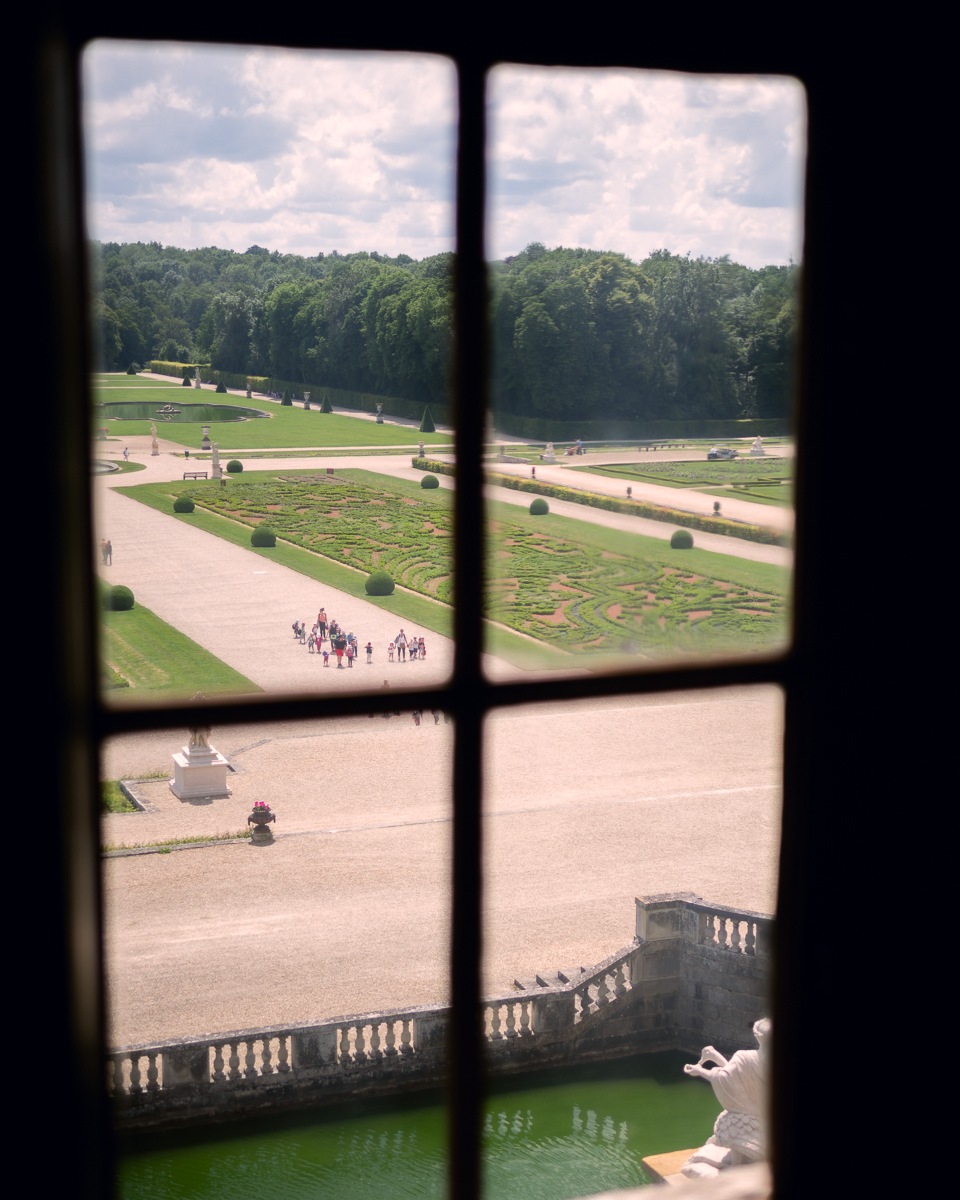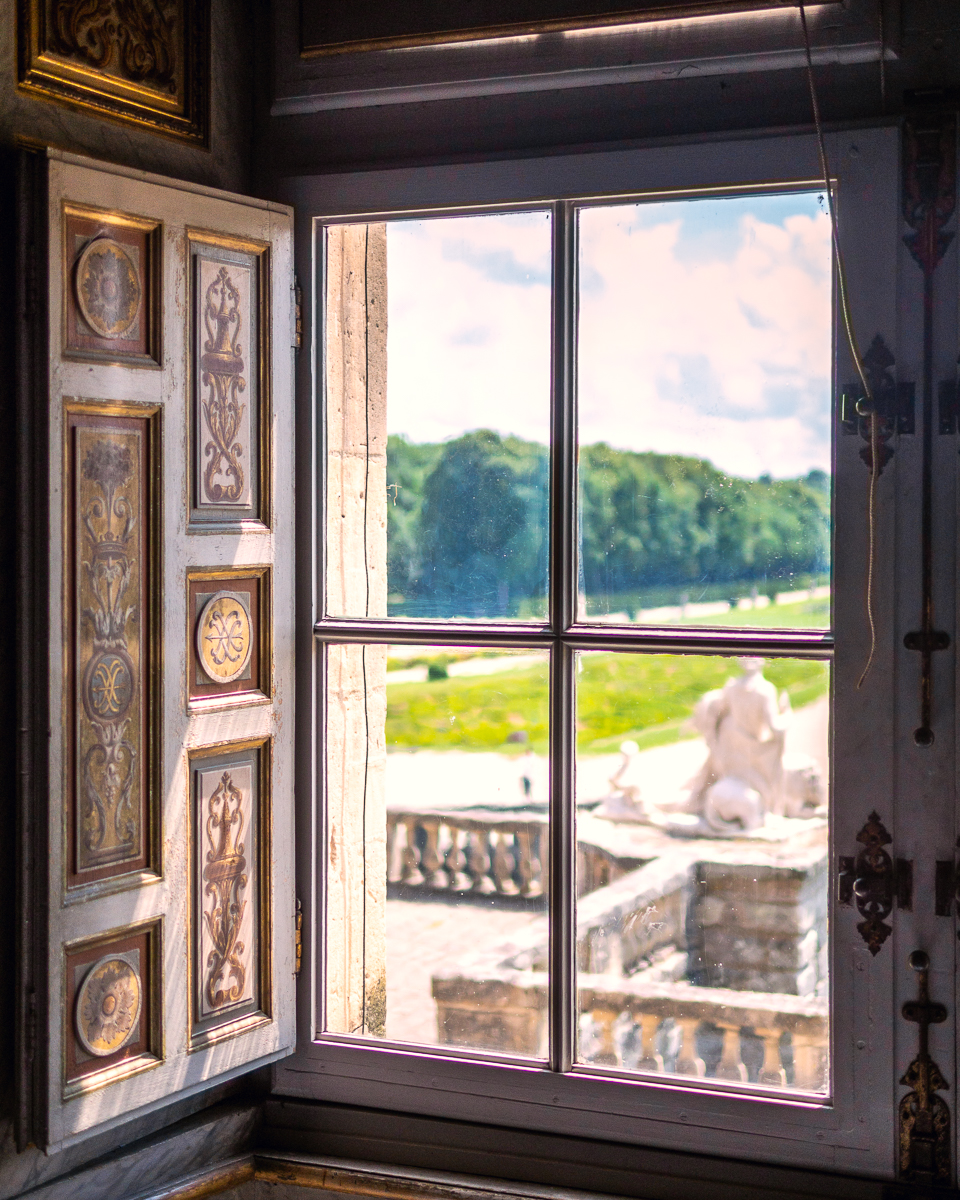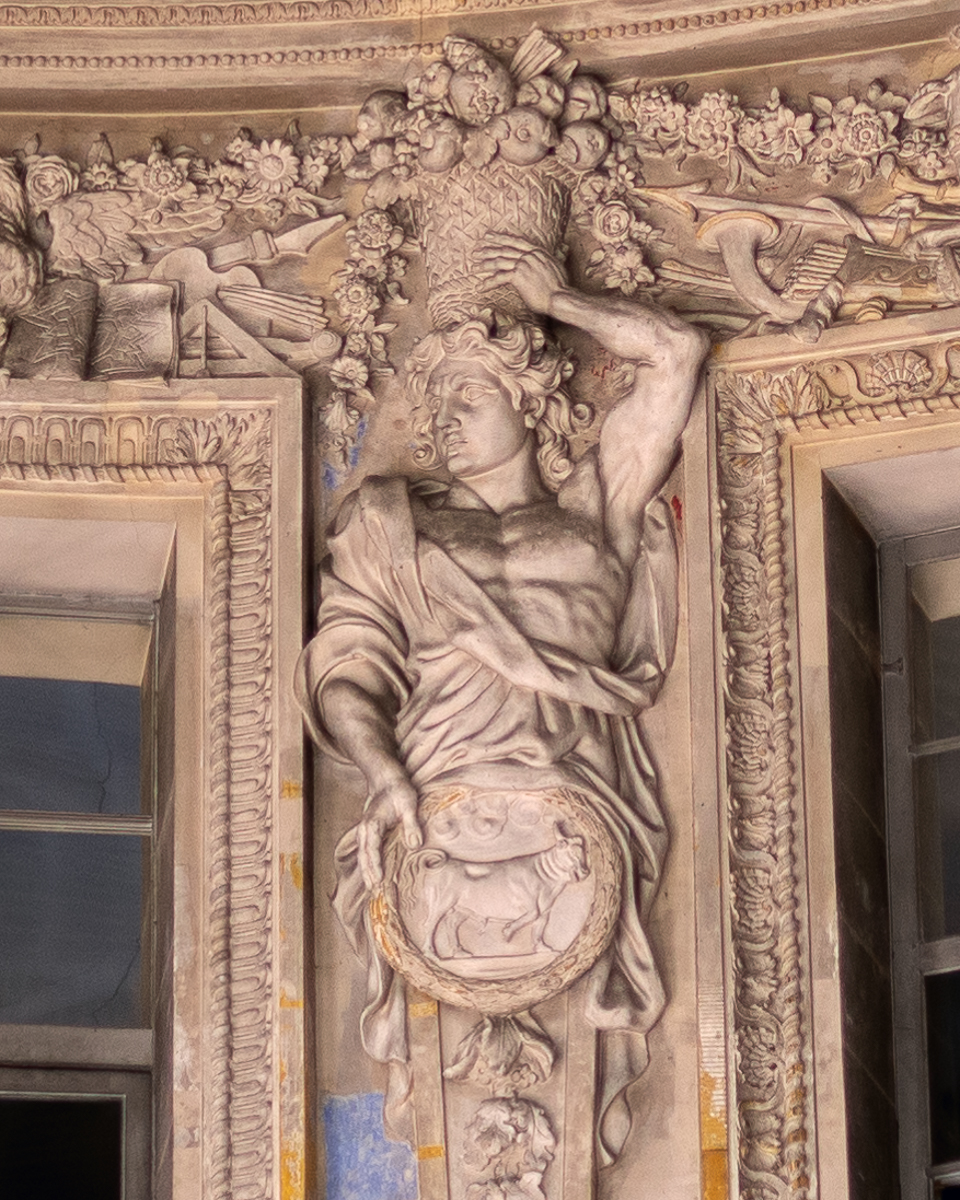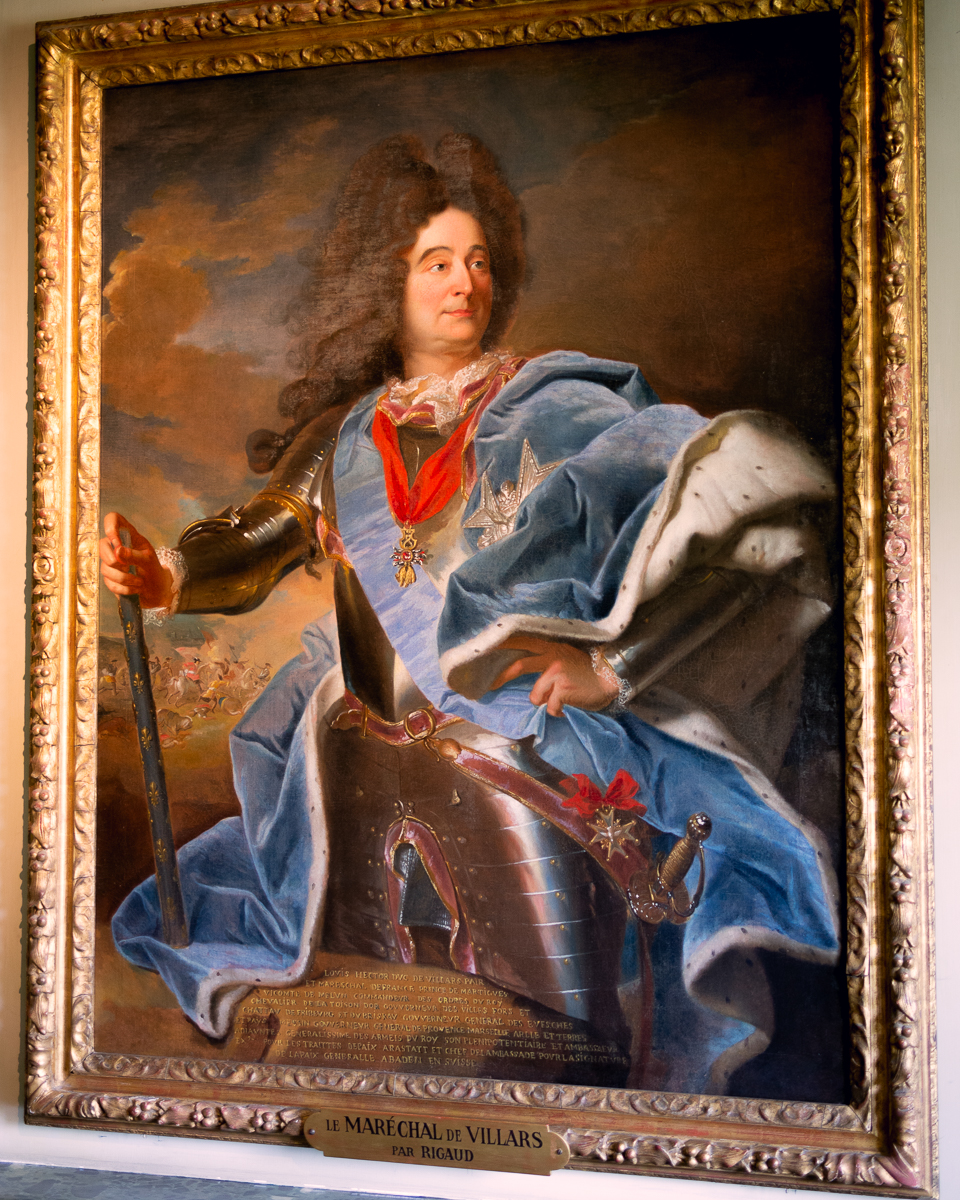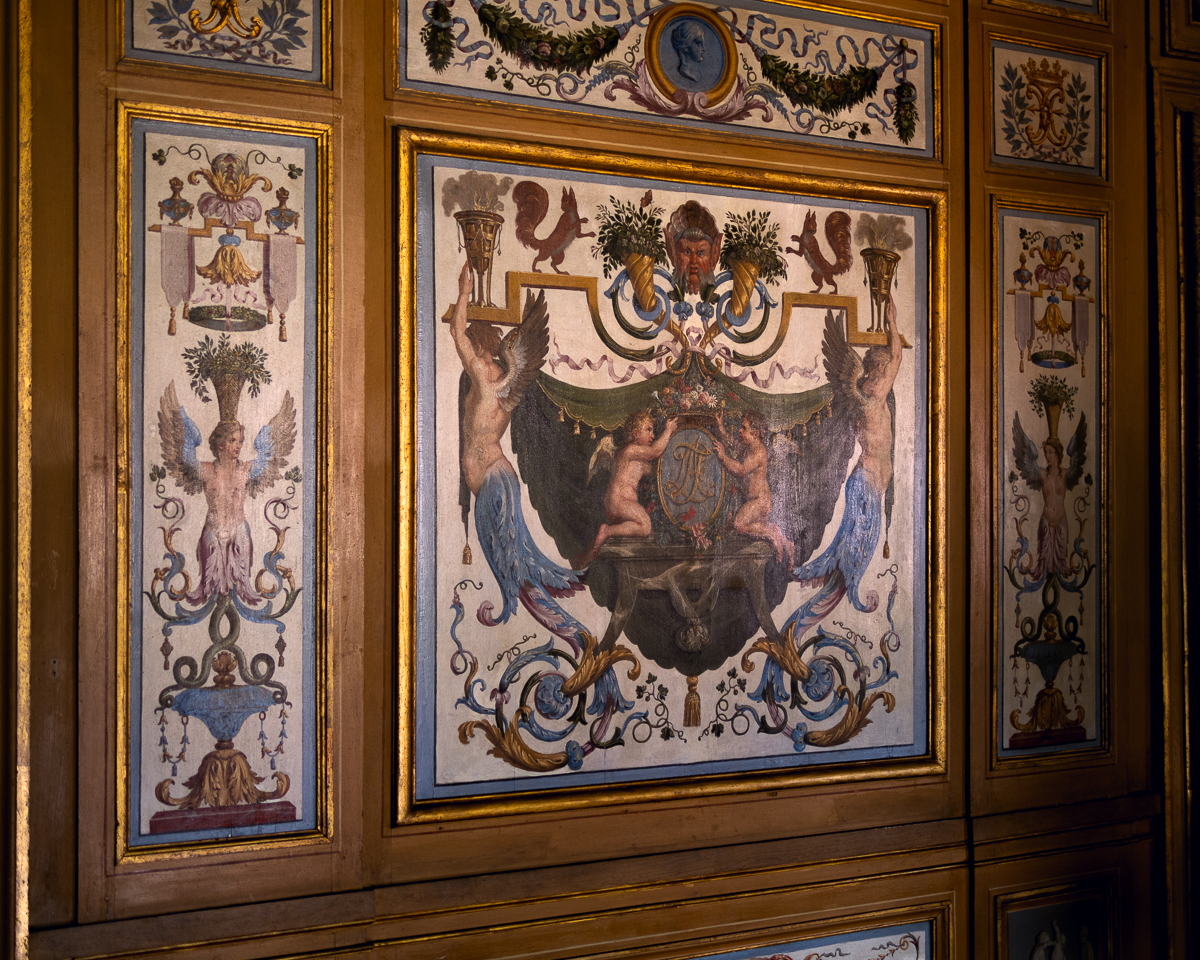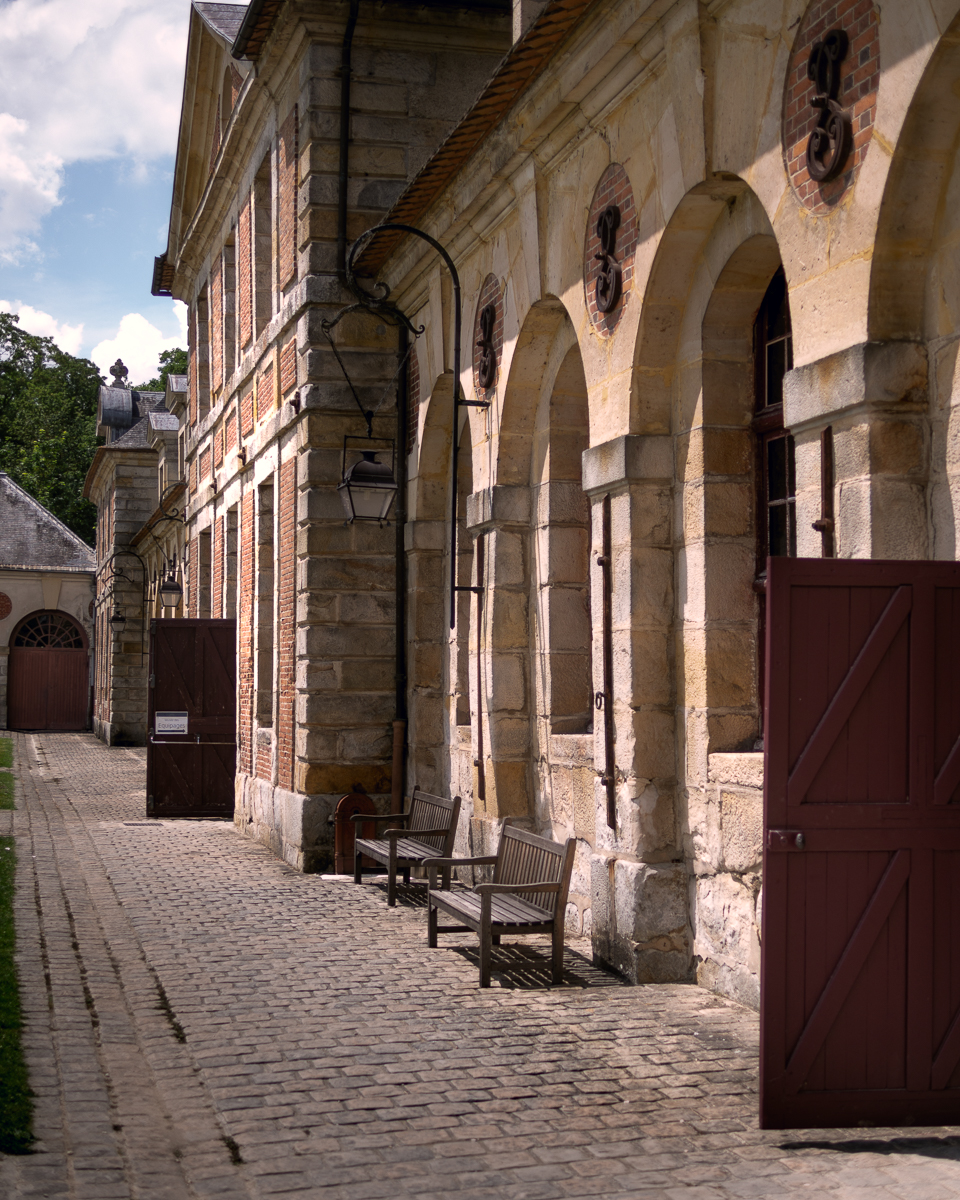Interrupting the featureless farmland a peculiar treeline appeared on the horizon. It was obviously not a natural feature and had been born deliberately for some reason not yet apparent to me. As we approached, the car navigation instructed me to turn on a squeezed lane that ran in between the two identical rows of tall, mature trees. Planted so narrowly to the road it was barely wider than a single lane. A tour bus behind us stopped in what available burm there was in order to allow a car in the far distance to approach and pass. Clearly the driver knew the wider points that can accommodate such an action. That is when it occurred to me that this was not a modern road devised for automobile traffic but a centuries-old driveway made for carriage travel. My curiosity and excitement instantly piqued. I had only a vague knowledge about the destination upon which we were headed and now the sense of mystery and anticipation about what lay ahead was palpable.
Through an ominous planned forest that replaced the treeless agriculture a grand chateau rose like a royal dream out of a clearing. Flanking a central gate on both sides were pink buildings in a stately, and distinctly pre-Revolutionary, French style. The gate was studded with nine columns topped by 18 large and crumbling stone busts of seemingly very important people. At the center of the wealthy, rural, hacienda-like complex sat the utterly-out-of-place, French-baroque Château de Vaux-le-Vicomte like a mirage in a desert. It was built of heavy stone, decorated with ornate detailing and capped by a high, blue roof. It was elegant and it was smart. When built, it was a glinting jewel like none had seen with the sole purpose to wow its visitors, something it continues to do to this day. Like the busts on the gate, it was clear that its occupier was important, or at least wanted to give that impression. But as majestic a structure Vaux was, it felt restrained, understated and modest in size. Vaux was fit for a king, though no king would stop this short with a building this important.
It created a great scandal when it was built by Nicolas Fouquet in 1661. Fouquet was indeed not the king but instead King Louis XIV’s finance minister. He hired a team of Europe’s top architects to build his dream home with money skimmed directly from the top of Louis’s coffers. When twenty-two-year-old Louis visited the much gossiped about estate he had Fouquet arrested and Vaux confiscated. Louis’s reasons were less about theft and more about the insult and audacity of the minister’s ostentatious palace. In a fit of juvenile insecurity Louis hired the same architects to begin the grand task of building Versailles with the primary intent of recapturing the prize for finest palace in all of Europe.
Across the lane from the chateau was a puzzlingly small parking lot with two lonely cars. It seemed impossible. Why would such a magnificent attraction have such a small parking lot? Could it be that Vaux was largely undiscovered? I radiated internally with pride as all signs indicated that visiting Vaux may have been an excellent decision. The large beautiful carriage house to the right of the gate was home to an empty ticket counter and a large gift shop. We fanned out into the sprawling garden that surrounds the chateau on three sides. An imposing moat, a decorative feature from a romantic past, encircled the building. The reflective qualities of the dark waters and tall embankments gave the chateau the appearance of being suspended in mid air and highly formidable. Extending as far as my eyes could see a mixture of formal and informal gardens with broad cinder paths gave contrast of scale to the modest home.
I was surprised at how utterly devoid of human life the grounds were. A tour group of about ten children dressed in period costumes with straw hats watched their identically dressed adult guide demonstrate 17th century gardening techniques. A couple strolled slowly off into the distance, and a golf cart driven by a groundskeeper slowly inched its way across the vast formal French garden. I relished in having our own private palace, while knowing that hordes of tourists were amassing at the gates of Versailles just on the other side of Paris. A closed cafe with some simple patio chairs and tables became the perfect setting to imbibe in our packed picnic. I couldn’t have dreamed of a more inspired setting for lunch.
With the sweetness of the fresh cherries clinging to my lips I grabbed my camera and slowly sauntered the stony paths. The back of the building provides the most distinct and iconic views. While the front is formal with its straight lines and square corners, the back is fronted by a large oval salon topped by an unusual, matching dome and towering lantern. I took some time to watch the costumed children in their tour group and decipher their lesson. I attached the mini tripod to my camera and placed it on the stone wall I was now sitting on. I framed the children in the foreground with Vaux’s dome in back. I made the difficult decision to leave my full-sized tripod at home due to our packing limitations. Situations like this, while somewhat limiting, are sufficient to accomplish most of my photographic needs.
After a long time walking the garden we found our way to Vaux’s front gate. I raised the camera to my eye. A green grounds truck, browning with rust and many years of overuse, came into view on the left side of the frame. It stopped and backed up. I lowered the camera and two men peered out of the open passenger side window. The driver spoke something in French and I interrupted to say I only speak English. He paused and with a combination of broken English and pantomime, he indicated that he’d wait for me to take my photos and backed up more. I took a few truck-free photos and gave him an appreciative thumbs up. He flashed a big smile and said he knew it was a very beautiful truck but assumed I’d rather not have it in the shot. He drove through the gate and parked the truck at the chateau’s front steps as though that is where it belonged.

